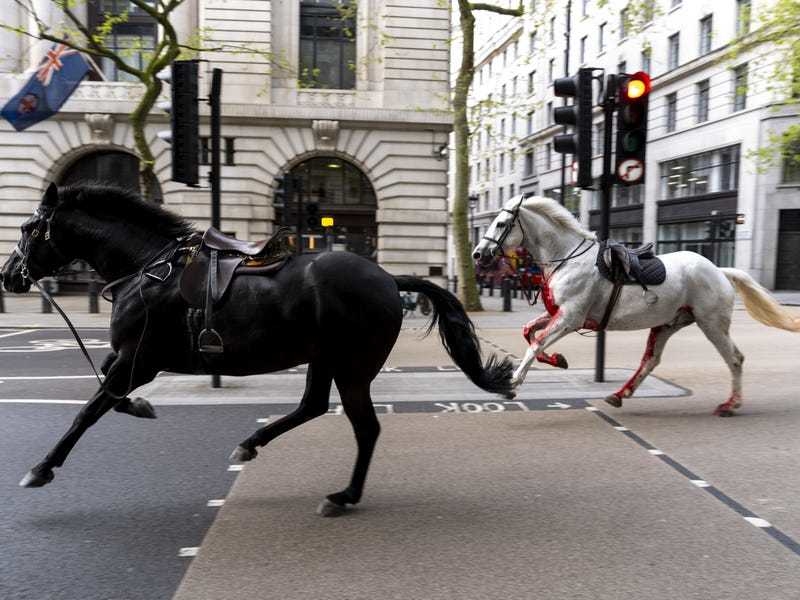The former police officer convicted with killing George Floyd could be sent to prison for decades, with the guilty verdicts being met with jubilation and sorrow across the US.
The three-week trial of 45-year-old Derek Chauvin ended swiftly with barely more than a day of jury deliberations, then just minutes for the verdicts to be read – guilty, guilty and guilty – and he was handcuffed and taken away to prison.
Hundreds of people poured into the streets of Minneapolis, the city where Mr Floyd was killed, some running through traffic with banners.
Tears streamed down his face as he likened Mr Floyd to the 1955 Mississippi lynching victim Emmett Till, except that this time there were cameras around to show the world what happened.
The jury, comprised of six white people and six of black or multi-ethnic backgrounds, came back with its verdict after about 10 hours of deliberations over two days.
The now-fired white officer was found guilty of second-degree unintentional murder, third-degree murder and second-degree manslaughter.

But he added: “It’s not enough. We can’t stop here. We’re going to deliver real change and reform.
“We can and we must do more to reduce the likelihood that tragedies like this will ever happen again.”
At a park next to the Minneapolis courthouse, a hush fell over a crowd of about 300 as they listened to the verdict on their mobile phones. Then a great roar went up, with many people hugging, some shedding tears.
At the intersection where Mr Floyd was pinned down, a crowd chanted, “One down, three to go!” – a reference to the three other fired Minneapolis officers facing trial in August on charges of aiding and abetting murder in Mr Floyd’s death.
Mr Floyd, 46, died on May 25 after being arrested on suspicion of passing a counterfeit 20 dollar bill for a pack of cigarettes at a corner market.

The centrepiece of the case was the excruciating bystander video of Mr Floyd gasping repeatedly, “I can’t breathe” and onlookers yelling at Chauvin to stop as the officer pressed his knee on or close to Mr Floyd’s neck for what authorities say was nine and a half minutes, including several minutes after Mr Floyd’s breathing had stopped and he had no pulse.
Prosecutors played the footage at the earliest opportunity, during opening statements, and told the jury: “Believe your eyes.”
From there it was shown over and over, analysed one frame at a time by witnesses on both sides.
The furore also led to the removal of Confederate statues and other offensive symbols such as Aunt Jemima.
In the months that followed, numerous states and cities restricted the use of force by police, revamped disciplinary systems or subjected police departments to closer oversight.
The so-called Blue Wall of Silence that often protects police accused of wrongdoing crumbled after Mr Floyd’s death.

Chauvin will return to court in two months when he will be sentenced.






